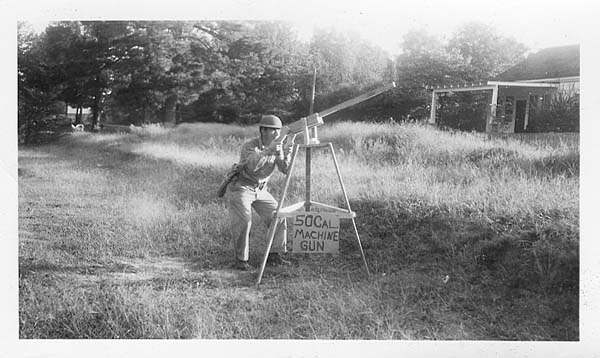Yeah the cavalry clique was a big thing in the USSR's military. Good point about Zhukov being overpromted, I hadn't thought about just how rapid his rise was from 1937 on.
You've got good points there. I guess that comes back to Stalin's malignant influence and promoting cronies over competence and promoting them much quicker than anyone should have been, so that they rose well beyond their level of experience. Looking into his history, Zhukov got his first corps command in 1937 and by early 1941 he was chief of the general staff!
Basically by 1941 the US was well into rearmament and the 1941 maneuvers were prepping for war. It involved over 400,000 troops:

en.wikipedia.org
The “cavalry clique” is a tricky subject. The
real clique was based on the 1st cavalry army: Voroshilov (who was associated with Stalin at least starting from Tsaritsin), Budenny (who made his loyalty to Stalin clear during the Polish War) and, as a “younger generation”, Timoshenko (who had an advantage of learning at least basics of a modern warfare). These people had been unquestionable loyalists and valued as such.
Zhukov also served in the 1st CA and even got the Red Banner (for participation in crushing Tambov Peasant Rebellion) so the loyalty stamp was on his forehead 😉
Rokossovsky and Pavlov had a cavalry background but did not have the same loyalty stamp. Pavlov, IIRC, simply had a
wrong cavalry background coming from Primakov’s “Red Cossacks” (rivals of the 1st Cavalry Army). Konev, who was not a cavalryman, got an useful connection to Voroshilov while serving in the Far Eastern Republic and by 1938 was an army commander
on the Far East (aka, far away from the power center) but then Zhukov bypassed him in the promotion.
Actually, a potential answer to your question about the general screwup can be quite simple: what could commander of a cavalry division (at least he spent 4 years in that position prior to his fast elevation) who spent a
year in Military Academy understand in the area of a general logistics and specifically the aspects involving mechanized transportation? Keep in mind that it was something of a sign of a loyalty in the “clique” to minimize importance of the technical means in general. One of the “jewels” of their military thinking was a proposal to pull the tanks to the front line by horses to avoid a noice and achieve a surprise. At Khalkin Gol these issues were handled by front level personnel leaving Zhukov only with the purely operational issues. Blame for big losses in the tanks had been pushed to the Directorate of the Armored Forces led by Pavlov (who was also present at Khalkin Gol as an advisor in armor deployment). BTW, with all his faults, as early as in 1938 Pavlov requested rearmament of the existing tanks with the 76mm guns and creation of a heavy tank (KV) as a breakthrough weapon.
BTW, the tank corps units with a structure defined by Tukhachevky (*) had been abolished by the results of their performance in Poland in 1939, initiative was supported by pretty much everybody from Shaposhnikov to the commanders of these units. Pavlov’s idea was to preserve the tank battalions, regiments and brigades within the infantry units (which eventually did happen) and create motorized divisions. As a result, instead of 4 cumbersome tank corps there would be 15 mechanized divisions (close in their structure to the German ones), much more flexible and easier to deploy. Plan was not materialized: Pavlov was removed from his position and by the start of the war the huge mechanized corps units had been back and demonstrated their uselessness. Actually, when the structure of a tank force was more or less finalized in 1942, it had even fewer tanks than a proposed Pavlov’s tank division. So there was a need to create tank armies.
Now, I’m afraid that you missed my point about the wooden weapons. The SU in 1941 was under
immediate attack while the US was not. It was not an issue of the maneuvered with the fake weapons but a need to provide the troops with elementary rifle practice before they sent to the (crumbling) front. Compare the cute uniforms at the maneuvers with the lapty I told you about and imagine these soldiers from your photo to be sent to the front without seeing a real weapon. The US had time to raise the troops, equip them and train them properly before sending them anywhere.
_____
(*) Structure of the mechanized corps (11th corps) in 1935 included: 2 mechanized brigades (384 tanks and artillery units), infantry brigade, separate reconnaissance tank battalion, communication battalion. Besides the main tanks corps had 63 light tanks, 52 flame throwing tanks, 20 artillery pieces, 1,444 automobiles and 8,965 personnel. Taking into an account the means of communications and general competence, these units were too big and could be used only on front level
In 1941 the reorganized/recreated corps included: 2 tank divisions (70 and 128 tanks, 58 and 72 armored cars) and motorized division (57 tanks and 11 armored cars), communication battalion, battalion of engineers, motorcycle regiment.
Tank corps of March 1942 included: one heavy and two medium tank brigades (150 tanks, 20 76mm guns, 12 45mm antitank guns, 20 AA guns, 66 antitank rifles, 44 mortars and 539 cars. In the following months number of tanks had been increased, the field rockets (katusha) had been added together with the reconnaissance battalion, motorcycle battalion and 20 British personnel carriers.

